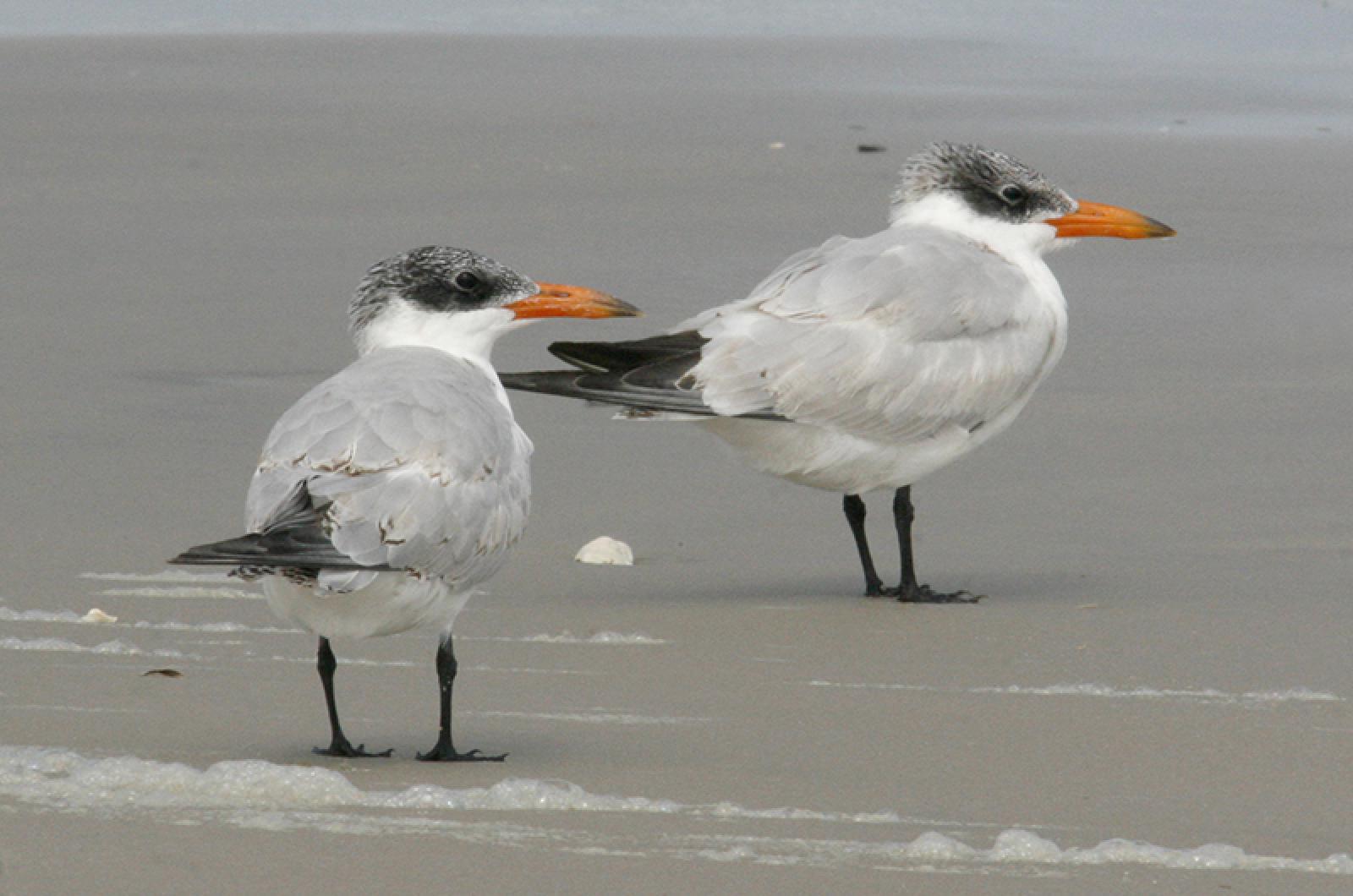Southbound warblers and other insect-eating birds are supposed to be peaking about now.
On Sept. 5, Christine Audette, Richard Audette and Tim Donovan visited Sepiessa Point and spotted a warbling vireo, a pine warbler and three prairie warblers. On Sept. 9, Charles Morano spotted a blue-winged warbler, an early yellow-rumped warbler and a common yellowthroat at Donaldbin Close in Edgartown, and at Fulling Mill Brook he found two yellowthroats and a northern parula. The Felix Neck Early Birders led by Steve Allen and Al Sgroi also spotted a yellow-rumped warbler on Sept. 8. And the Martha’s Vineyard Bird Club found 17 bobolinks at the Gay Head Cliffs on Sept. 10.
The above species are great birds and foreshadow things to come. But it seems to me that we should have more of these songbird sightings by now. The Bird Club made a trip to Aquinnah on Sept. 10. Being at the Island’s western end, it is usually a birding hotspot where migrants concentrate in sometimes large numbers before they have to fly over the open ocean. The only sighting last weekend’s outing produced was a common yellowthroat.
John Nelson reports from Squash Meadow Shoal — two miles east of Oak Bluffs — that there were lots of adult post-breeding plumage laughing gulls, an occasional great shearwater and, most notably, two pairs of American oystercatchers flying by from Cape Cod. A parasitic jaeger — a seabird seldom seen from shore — was observed by Pete Gilmore, Lanny McDowell and Jeff Peters on Sept. 8 close to Norton Point. It utilized fantastic aerobatics to expertly chase terns to steal fish from them.
Bob Shriber found two gadwalls on a pond in Katama on Sept. 7; Jeff Peters, Pete Gilmore and Lanny McDowell spotted two American wigeon at the Oak Bluffs pumping station on Sept. 8; and Al Sgroi spotted nine black ducks at Sheriff’s Meadow Sanctuary on Sept. 9. That same day, the Felix Neck Early Birders spotted two wood ducks flying along the Major’s Cove shoreline.
These species are winter residents last seen this past spring, although all three species are known to breed here in small numbers.
Ken Magnuson saw a sora — a small rail — at the Edgartown Golf Club on Sept. 9. That same day, Marquisandro Robadel saw a Virginia rail in a most unusual place: exploring underneath a cement and wooden foundation being built near Squibnocket Point. On Sept. 10, Jeff Bernier found two Caspian terns at Norton Point, with the immature bird still begging for food from the adult.
These next few months are great times for observing a variety of predators. The Sept. 10 Bird Club trip to the Gay Head Cliffs also produced a predator show. They all saw a peregrine falcon chasing a northern harrier, with the harrier providing close-up views of it as it swooped about at the cliffs. The merlin they spotted was watching the birders from a tree. They also saw a Baltimore oriole, six common eiders, three gannets, two tree swallow, six barn swallows, a house wren, three mockingbirds, 15 cedar waxwings and 15 American goldfinch.
Norton Point is the go-to place for shorebirds this week. Spotted there have been large sandpipers, western willets and, on Sept. 3, David Padulo saw a whimbrel.
Dave Oster saw the marbled godwit on Sept. 6. Both the godwit and western willets were seen on Sept. 7 by Jeff Bernier and again by Allen Keith. The troika of Jeff Peters, Pete Gilmore and Lanny McDowell spotted them on Sept. 8; Shea Fee on Sept. 9; and Luanne Johnson on Sept. 11.
Other more usual species seen there include four common eider, two white-winged scoters, American oystercatchers, black-bellied plovers, semipalmated plovers, piping plovers, killdeer, red knots, sanderling, least sandpipers, semipalmated sandpipers, spotted sandpipers, laughing gulls, lesser black-backed gulls, roseate terns, common terns, peregrine falcon and barn swallows.
Of course Norton Point is not the only place to find shorebirds. Dave Oster has been out birding a lot and his highlights from Sept. 6 at Red Beach are four great blue herons and 29 great egrets. At Little Beach, he saw 15 oystercatchers, 14 ruddy turnstones, 23 greater yellowlegs, 15 roseate terns, and 600 common terns on Sept. 7.
Clifton Stone spotted a lesser black-backed gull at Lucy Vincent Beach on Sept. 6. At Long Point on Sept. 7, Shea Fee found five oystercatchers, 35 sanderling, a harrier and five barn swallows. The Felix Neck Early Birders found 16 black skimmers, one greater yellowlegs and two lesser yellowlegs on Sept. 8. At Little Beach, Jeff Peters, Pete Gilmore and Lanny McDowell saw 10 ruddy turnstones, three lesser yellowlegs, 25 roseate terns and 550 common terns, also on Sept. 8.
Ken Magnuson spotted an American golden plover on Sept. 9 at the Edgartown Golf Club. That same day, Al Sgroi found nine greater yellowlegs at Sheriff’s Meadow Sanctuary.
Connie Alexander noticed that she has fewer ruby-throated hummingbirds at her feeder, as did John Nelson. But they each have several hummers hanging around, as do Karen Swift-Shannon, Laura Hilliard, Mary Point, Ellen Bunch, Bob Morse, Betty Burton, Kathy Landers, Penny Uhlendorf, Tom Hodgson, Lisa Maxfield (who has very polite hummers taking turns at trumpet vine), Thaw Malin and Cynthia Bloomquist, Shea Fee and Dave Oster. Be sure to look for small red dots of red (gorgets) on the throats to distinguish young males from the females.
Last: participants on Felix Neck’s moonrise kayak tour on Sept. 9 were treated to sightings of two black skimmers, at least 175 double-crested cormorants, several ospreys, the unearthly squawking of a great blue heron, and the bright reddish-orange full moon reflecting off the calm waters of Sengekontacket Pond.
Please email your sightings to birds@mvgazette.com.
Robert Culbert is an ecological consultant with Nature Watch LLC, living in Vineyard Haven.








Comments
Comment policy »